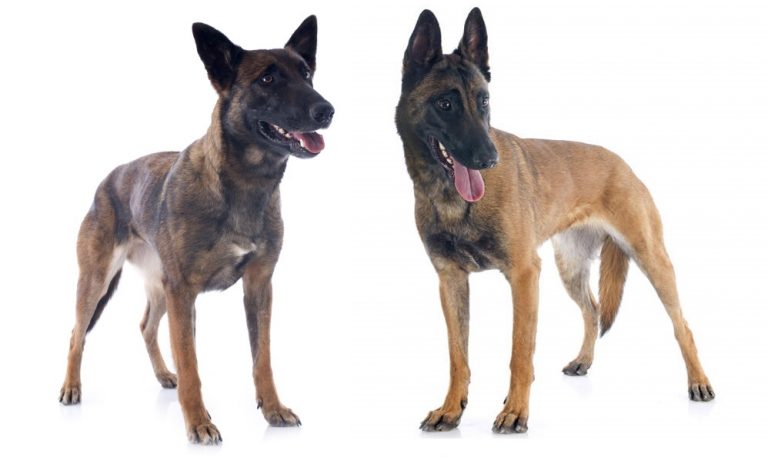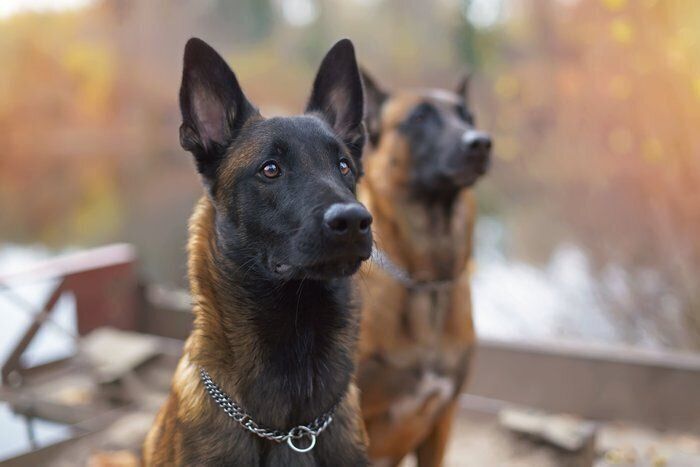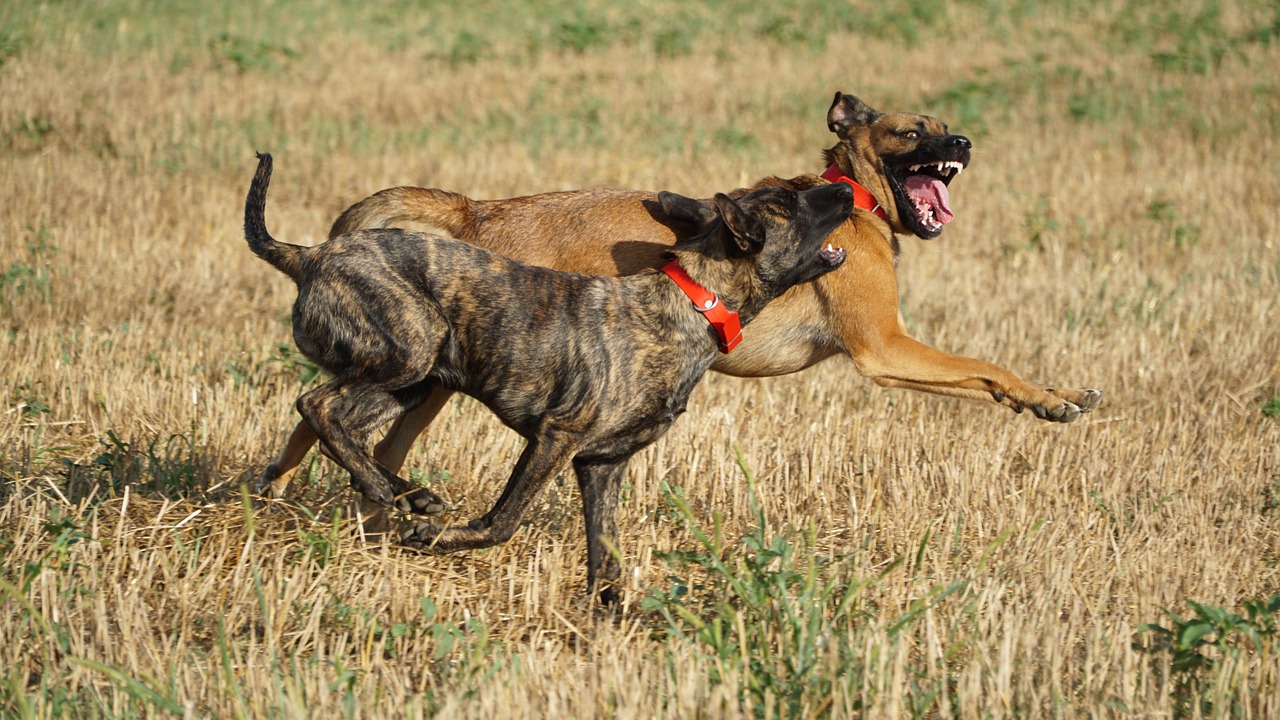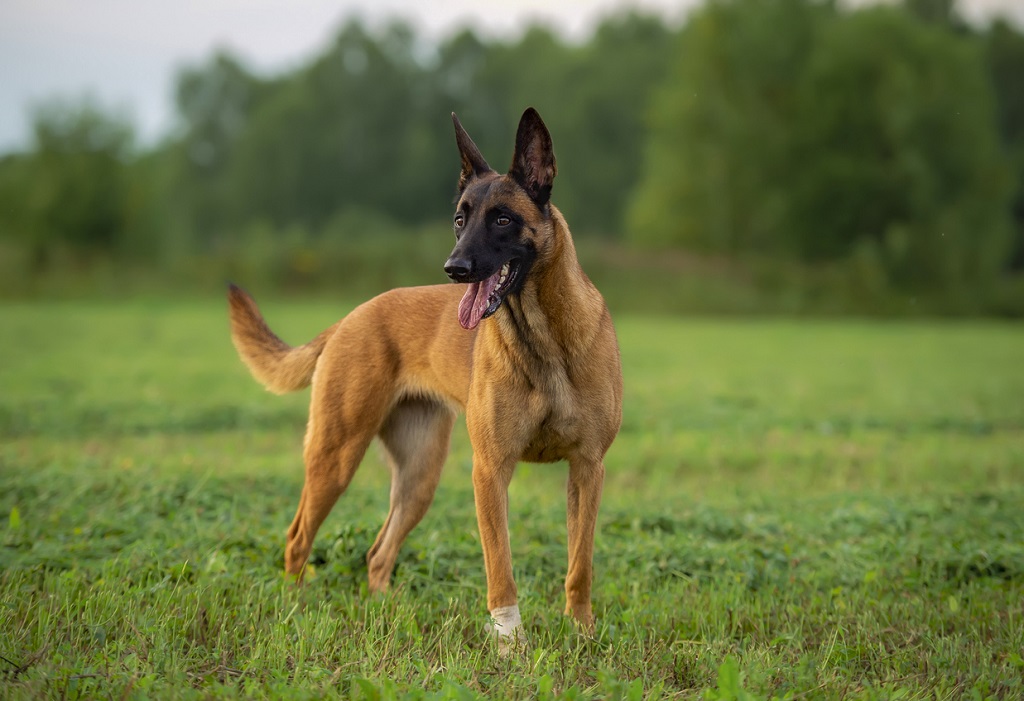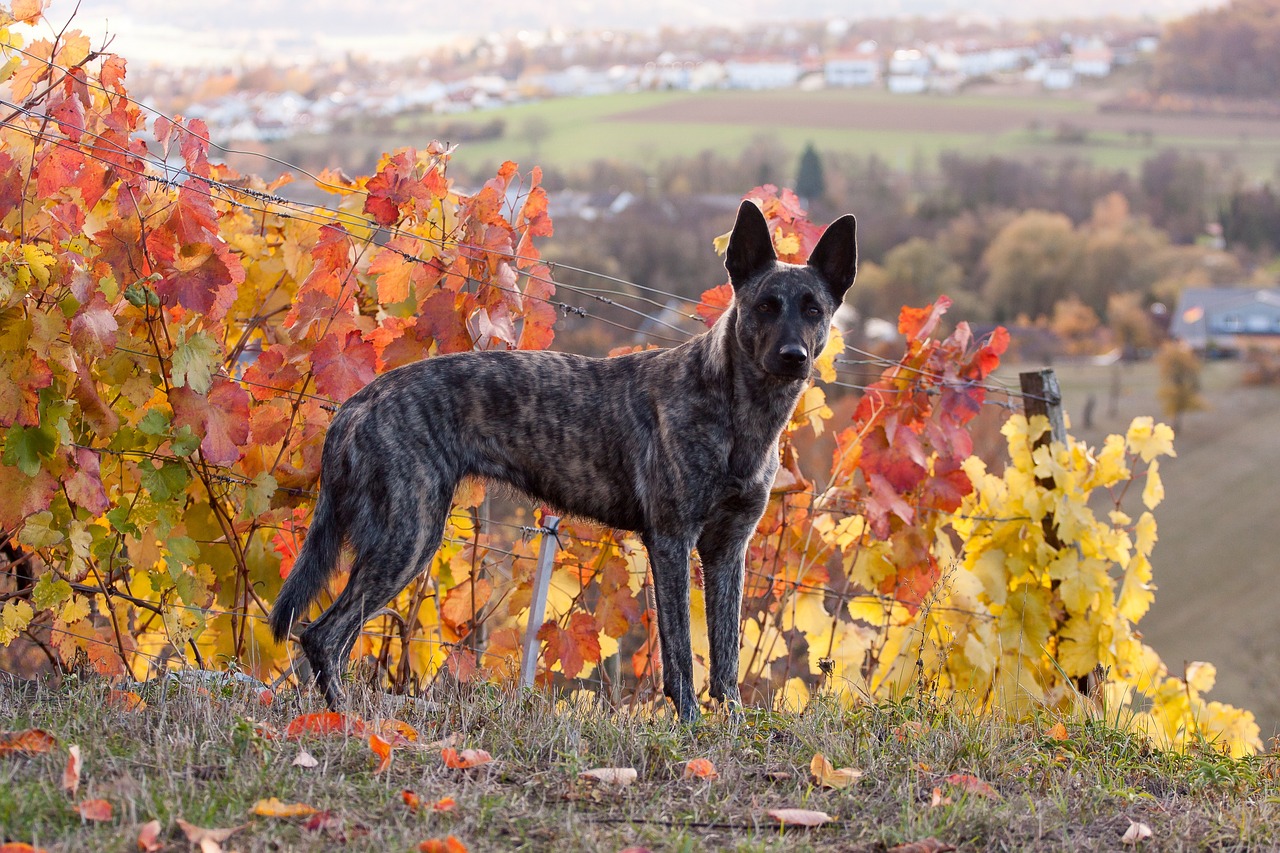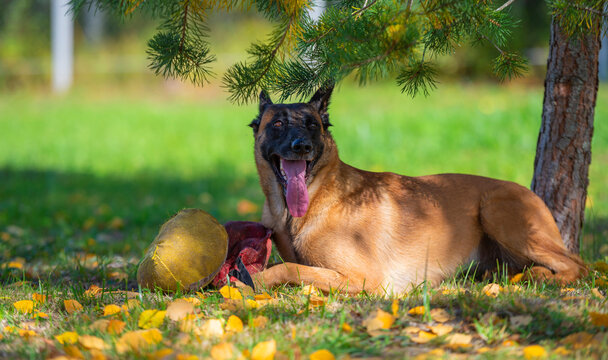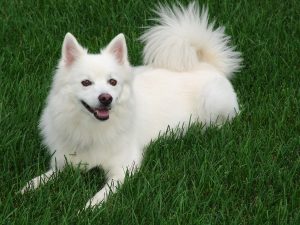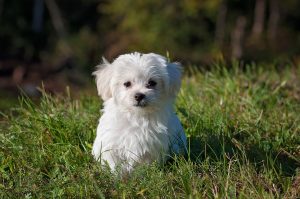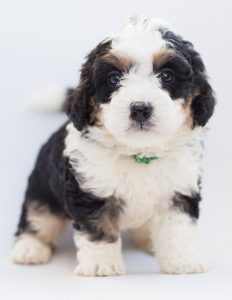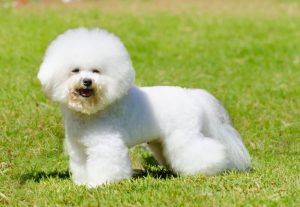These two dog breeds are similar in a way they share traits with the most famous working dog of all, the German Shepherd. Both have been compared to the German Shepherd, but how do they compare themselves? Today, we will take a look at the Dutch Shepherd and Belgian Malinois breed comparison.
They are two breeds that are sometimes confused. Both of these canines trace their roots back to herding cattle and sheep, but nowadays, they serve a different purpose.
The Belgian Malinois is a confident, smart, and hardworking breed, while the Dutch Shepherd dog is the lively and athletic one.
No matter if you want a herding dog or a protection dog, these two will fill the role. Speaking about their overall difference, the Dutch comes from the Netherlands and is an all-around farm dog, while the Belgian Malinois comes from Belgium. Hey, these countries share a border, so the dogs are quite similar.
Breed History
Let’s start with the Dutch Shepherd and Belgian Malinois dogs comparison of their history. We said that at one point they crossed paths with the German Shepherd.
Belgian Malinois were bred in the city of Malines, a city close to the Belgian capital Brussels. They were originally a Belgian Shepherd dog, used by shepherds and cattlemen as a herding breed. Back then, they were described as peerless livestock herders.
Bred to perform at a high level, they first came to the United States in 1911. During World War I and World War II, these dogs performed an important function.
The American Kennel Club recognized the breed in 1959. Since then, their numbers began to increase, and nowadays, they fill the role of a working dog. Many consider them a cheaper version of the German Shepherd. This dog breed often works in the army, police, and security, and can be used as a search and rescue dog.
Looking at the Dutch Shepherd history, the dog is native to the Netherlands. There, it was used by shepherds and farmers who needed a versatile dog.
Nowadays, it is described as a Jack-of-all-trades dog. This canine was used to keep chickens in check, pull carts, herd dairy cows, and keep a close eye on children.
According to The Dutch Shepherd Dog Club, the first member of this breed appeared in 1898. In the beginning, any color was permissible. But then, by 1914, brindle was the only acceptable coat color. This was to distinguish the canine from Belgian Shepherds and German Shepherds.
The modern Dutch Shepherd also fills the role of a police dog, guide dog, or any other working job.
Appearance Breed Comparison
Both of these breeds at some point crossed paths with the iconic German Shepherd. Because of this shared relative, they tend to look alike.
Looking at the breed standard set by The American Kennel Club, The Dutch Shepherd puppy can weigh between 65 and 90 pounds and stands between 21 and 24 inches.
When you look at this canine, it looks like a cross between a wolf and a German Shepherd.
As we said before, brindle is the acceptable coat color. Their short-hair coat type is also different than the one of the Belgian Malinois.
Speaking of the Belgian dog, they weigh between 40 and 80 pounds and grow between 22 and 26 inches when fully grown.
These dogs are lean and rangy, with a slim frame and long legs. They are definitely athletic. From their German Shepherd relative, the Belgian Malinois has inherited the long muzzle and erect ears.
Temperament
First, let’s start with the Belgian Malinois. Their personality is as spirited as they come. Ready to work and perform any work tirelessly, the Malinois has a strong work ethic. They are quick to respond to any cues and commands.
It is their intelligence that sets them apart. They served as a watchdog on farms and ranches, and nowadays, their career opportunities have expanded because of their agility, athletic ability, obedience, intelligence, and trainability.
Because of their possessive nature and high tendency to bite, they can be excellent guard dogs. Make sure to supervise them around children. Early and consistent training can help you get the dog you want. With firm, consistent, and positive reinforcement training, you can teach the Belgian Malinois to do everything you want.
But be aware of its watchful instinct. These dogs have a naturally high prey drive, and they will chase moving objects.
The Dutch Shepherd is a faithful pet and people-pleaser. He is happiest to be right by your side. While you can say he is an active dog, he will also happily lounge by your feet.
Similar to the Belgian Malinois, this dog lives to work. But do not worry, he knows when it is time to rest. When they have performed the tasks and finished the jobs, these puppies will settle down and recharge.
Because of their intelligence, endurance, and amazing loyalty, these canines are great pets. And their top-notch working skills make them amazing military dogs or police dogs.
What makes them amazing pets is their ability to switch gears in the blink of an eye. They are friendly, faithful, and playful, making them amazing for kids. But they will instantly keep strangers at bay. They hate to be left out and are happiest when they are with their family. That is if they are not working. When left alone for long periods or without a job, they can develop separation anxiety.
Barking Level
When you are getting a guard dog, you can expect a bit of barking. But do not worry, neither of these is prone to excessive barking. They do bark to alert, but that will not go on forever. Once properly trained, they will minimize barking.
Remember, these canines have been trained to be protectors. Their protective nature and instinct work 24×7.
The only reason why you might experience excessive barking with these dogs is if you leave them alone for long periods. That can leave to boredom, excessive barking, separation anxiety, and destructive behavior.
Teach them to speak on command, and you will enjoy their company.
Training
We are now at the training part of the Dutch Shepherd versus Belgian Malinois comparison. And as you can expect, it is a close one.
The Belgian Malinois is a very smart and obedient dog. The big challenge is he has strong protective and territorial instincts. But with proper socialization, and firm but not harsh training, they will be amazing pets.
Their instinct is to protect, so train them to be friendlier. The good news is they are highly trainable because of their high intelligence. Positive reinforcement is the key. And the best part is, Belgian Malinois dogs love to work. Training is like a game they play. If you want to work and train with your puppy every day, get a Belgian Malinois.
The same applies to the Dutch Shepherd. This intelligent breed loves a challenge and is prepared to be obedient. The lively and athletic breed is often on alert. It is a challenge because it has retained its herding instinct.
These dogs have an independent nature, which might make training more challenging. But their keen intelligence, obedience, and desire to work make them excellent training partners.
Just keep the training sessions shorter and with little repetitions. Otherwise, they will figure things out and training will not be a challenge.
Both of these breeds become more driven as the work becomes more mentally stimulating.
Exercise Needs
You have to remember you are working with two intelligent, and athletic working dogs. They need plenty of exercises, but also mental stimulation.
They thrive in dog sports, and agility is the best way to combine exercise and mental stimulation.
Do not get them if you cannot dedicate enough time and effort to training and exercise. Simply put, they love to work. And if they do not work, they become bored and destructive.
In the beginning, you should keep your Belgian Malinois on a leash, preferably a long leash to have more success in training. Once you tame their high prey drive, you can take away the leash.
Health Issues And Lifespan
The good news is that these dogs are very healthy breeds. After all, they work and train. And we know exercise equals good health.
They are prone to hip dysplasia and elbow dysplasia, but these are common problems in large dogs. You should test your Dutch Shepherd for thyroid problems as well if it is a long-haired variety, and for goniodysplasia, if you have a rough-hair variety.
Looking at the life expectancy of the breeds, the Belgian Malinois lives between 14 and 16 years. On the other hand, the Dutch Shepherd lives between 11 and 14 years.
Their life expectancy and lifespan might affect your decision. Another factor is the rarity, with the Dutch Shepherd quite rare outside of the Netherlands.
Which One Is Better For You?
At the end of the day, you have to look at your preferences and options. The Belgian Malinois is a great dog for people who are active and athletic. But they are not for first-time owners. They need solid parenting and ownership experience, a dog owner who can set boundaries.
Do not get them if you cannot provide enough exercise or a roomy home. And if you do opt for Belgian Malinois, do not get one from a working line. They have been trained purely as working dogs and will not make good pets.
The Dutch Shepherd is a dog bred for pet parents with an active lifestyle. They do love a spacious home and are amazing with kids. For a family pet, the Dutch Shepherd is the better option because of their friendlier nature to kids and lower prey drive.

